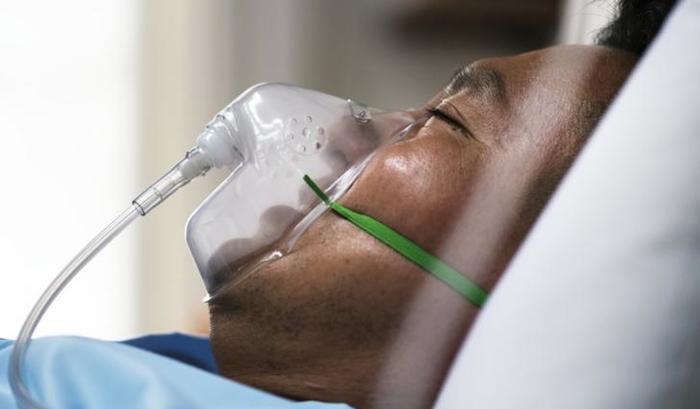It was supposed to be a safe delivery at Aminu Kano Teaching Hospital, or AKTH, Amina’s family sat back in relief as she was wheeled to surgery for a Caesarean delivery, but relief did not last, soon after, the oxygen concentrator at the ward refused to come on.
The backup supply of the hospital was inaccessible, and minutes of delay turned to tragedy. Amina did not survive. Family members point at equipment and oxygen failure as being responsible for her death.
For them, it was a loss too terrible to bear. For Nigeria’s health system, it was another painful reminder of how the country’s oxygen gap , a silent emergency, steals lives daily.
Oxygen shortages
Oxygen is not a luxury in healthcare. From premature babies struggling with their first breath to pneumonia patients fighting to breathe, this simple molecule all too often makes all the difference between life and death.
Yet in Nigeria, access to medical oxygen remains tenuous. No fewer than 100,000 Nigerian children under the age of five die from pneumonia annually—more than any other communicable disease.
Research shows that up to 35% of these deaths could be prevented with timely oxygen therapy, but many hospitals simply don’t have it.
Emmanuel Christopher, a paediatrician in Abuja, put it plainly: “We lose children not because their illnesses are untreatable, but because we can’t give them oxygen on time. Imagine what it would mean if every ward, from the smallest rural clinic to this hospital, had steady oxygen, it would change everything.”
The human cost
The oxygen shortage is more than just about equipment. Hospitals rely on cylinders that often arrive late, concentrators that stop working when the power goes out, and supply chains that leave rural clinics completely cut off.
Assessment of Lagos-based health facilities indicated that, while around 59% of hospitals had a functional source, only a small fraction of concentrators worked consistently, many failing due to power instability.
A stark revelation
During the COVID-19 pandemic, oxygen shortages became major stories. Patients lined up outside hospitals, and states scrambled to install emergency plants.
International partners—from the Global Fund to UNDP—helped to fill this imbalance.
But years later, old problems resurfaced. The majority of donated concentrators are idle amidst poor maintenance. Infrastructure setup at teaching hospitals falls short of standards.
A breath of fresh air
However, it isn’t all gloom. A tide of fresh innovations is starting to plug the gap.
UNICEF handed over the first fully solar-powered oxygen plant at Jericho Specialist Hospital, Ibadan, in 2024. This plant generates ~720,000 litres/day of oxygen.
Similarly, in Rivers State, a medical oxygen plant—including delivery devices—was handed over to General Hospital as part of Nigeria’s broader push to improve oxygen access.
In Lagos, a social enterprise is operating a hub-and-spoke system by producing oxygen centrally and transporting it to smaller facilities on demand, essentially like a ride-hailing service.
Beyond machines
Technology alone cannot close the gap, however. Cylinders and concentrators are only as effective as the people who run them. Many nurses remain unfamiliar with how to use pulse oximeters or unsure how to adjust flow settings for fragile newborns.
Development partners have stepped in. For instance, IHS and UNICEF donated a new plant to Kano State recently, training healthcare workers in administering therapy.
There’s also the national strategy for scale-up in health facilities (2023-2027) that underscores capacity building as central.
it calls for regular training of biomedical engineers, nurses, and physicians in oxygen delivery protocols, maintenance, and safety practices.
Financing, however, remains the hardest knot. Nigeria still allocates less than 5% of its federal budget to health, far below the 15% Abuja Declaration pledge African countries made more than two decades ago.
This underfunding means projects lean heavily on donors such as UNICEF, USAID, and the Global Fund, but without ring-fenced budgets for maintenance and spare parts, donated machines often fail within months, left idle in storerooms while patients still gasp for air.
It is already too late for families like Amina’s. However, for thousands of other patients struggling to breathe at hospitals all over Nigeria, new advances promise another chance at life.
Summary not available at this time.






